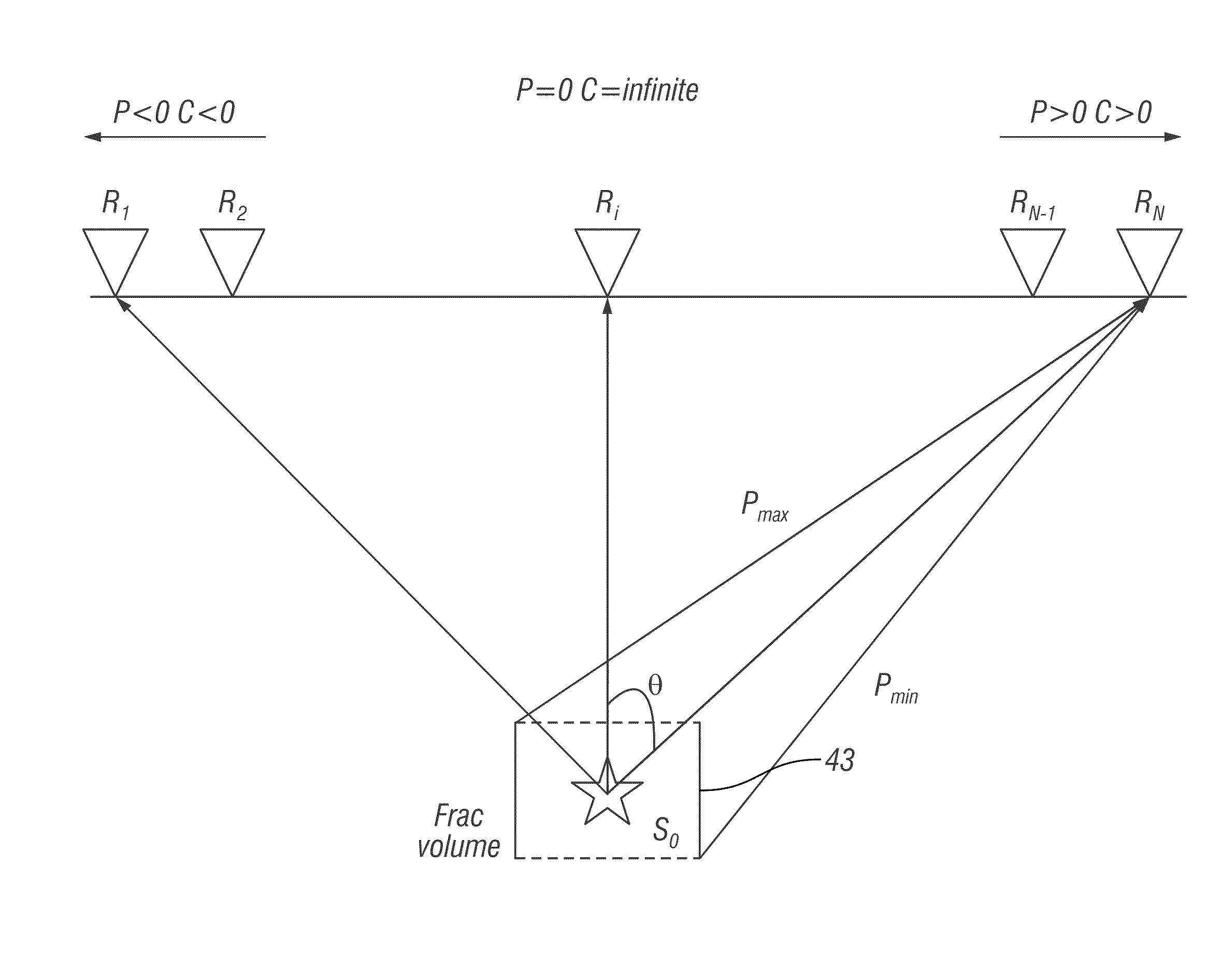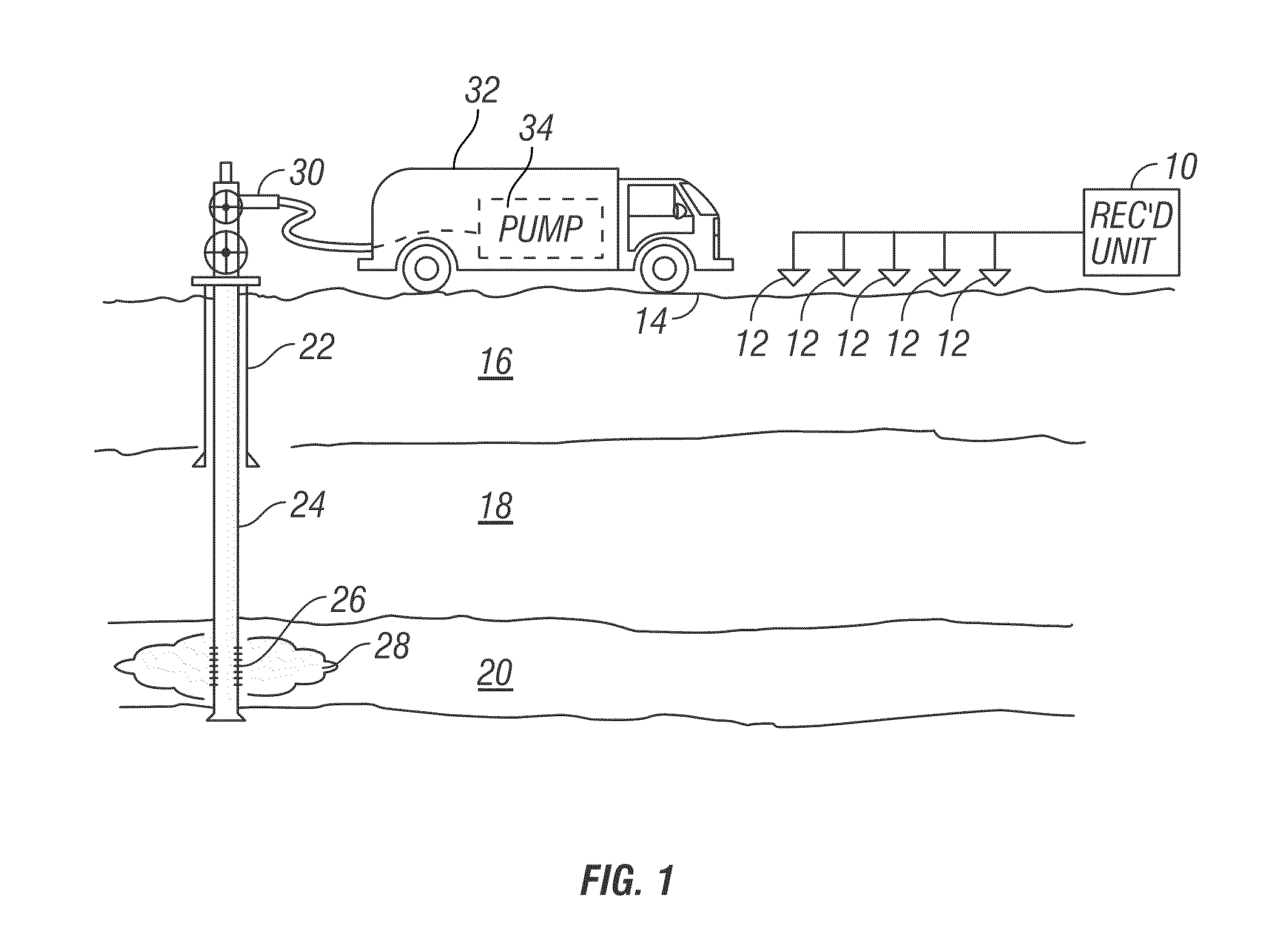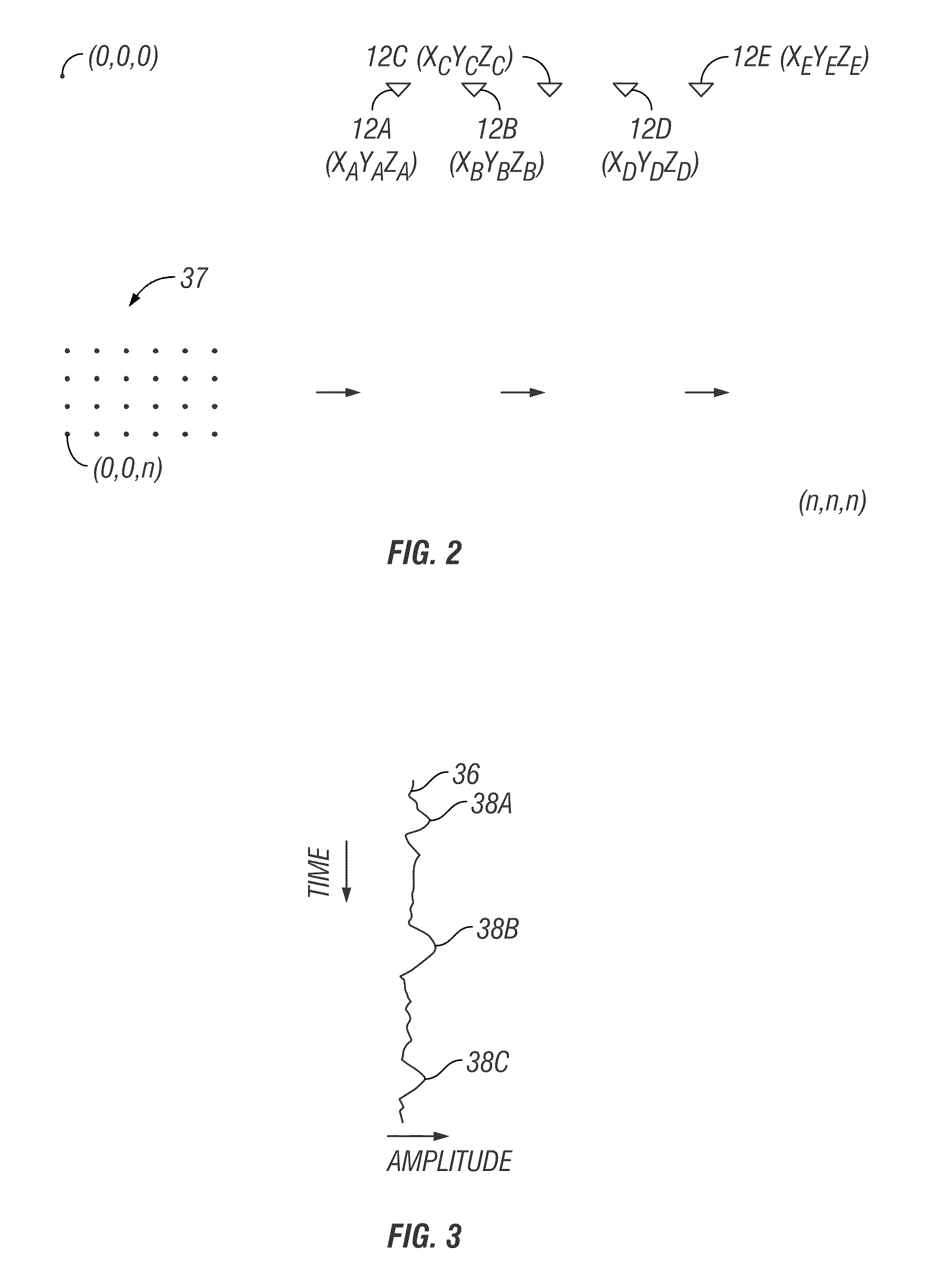Method for passive seismic emission tomography using adaptive velocity filter
a technology of seismic emission tomography and filter, applied in the field of seismic imaging of subsurface rock formations, can solve the problems of limited seismic events, unavoidable aspects of passive seismic surveying, extended recording time,
- Summary
- Abstract
- Description
- Claims
- Application Information
AI Technical Summary
Benefits of technology
Problems solved by technology
Method used
Image
Examples
Embodiment Construction
[0018]FIG. 1 shows a typical arrangement of seismic sensors as they would be used in one application of a method according to the invention. The example illustrated in FIG. 1 is associated with an application for passive seismic emission tomography known as “fracture monitoring.” It should be clearly understood that the application illustrated in FIG. 1 is only one possible application of a method according to the invention.
[0019]In FIG. 1, each of a plurality of seismic sensors, shown generally at 12, is deployed at a selected position proximate the Earth's surface 14. In marine applications, the seismic sensors would typically be deployed on the water bottom in a device known as an “ocean bottom cable.” The seismic sensors 12 in the present example may be geophones, but may also be accelerometers or any other sensing device known in the art that is responsive to velocity, acceleration or motion of the particles of the Earth proximate the sensor. The seismic sensors 12 generate ele...
PUM
 Login to View More
Login to View More Abstract
Description
Claims
Application Information
 Login to View More
Login to View More - R&D
- Intellectual Property
- Life Sciences
- Materials
- Tech Scout
- Unparalleled Data Quality
- Higher Quality Content
- 60% Fewer Hallucinations
Browse by: Latest US Patents, China's latest patents, Technical Efficacy Thesaurus, Application Domain, Technology Topic, Popular Technical Reports.
© 2025 PatSnap. All rights reserved.Legal|Privacy policy|Modern Slavery Act Transparency Statement|Sitemap|About US| Contact US: help@patsnap.com



